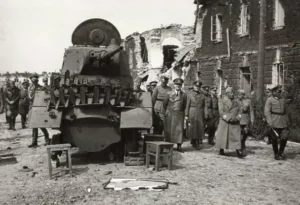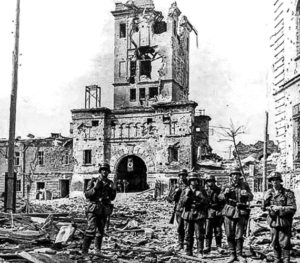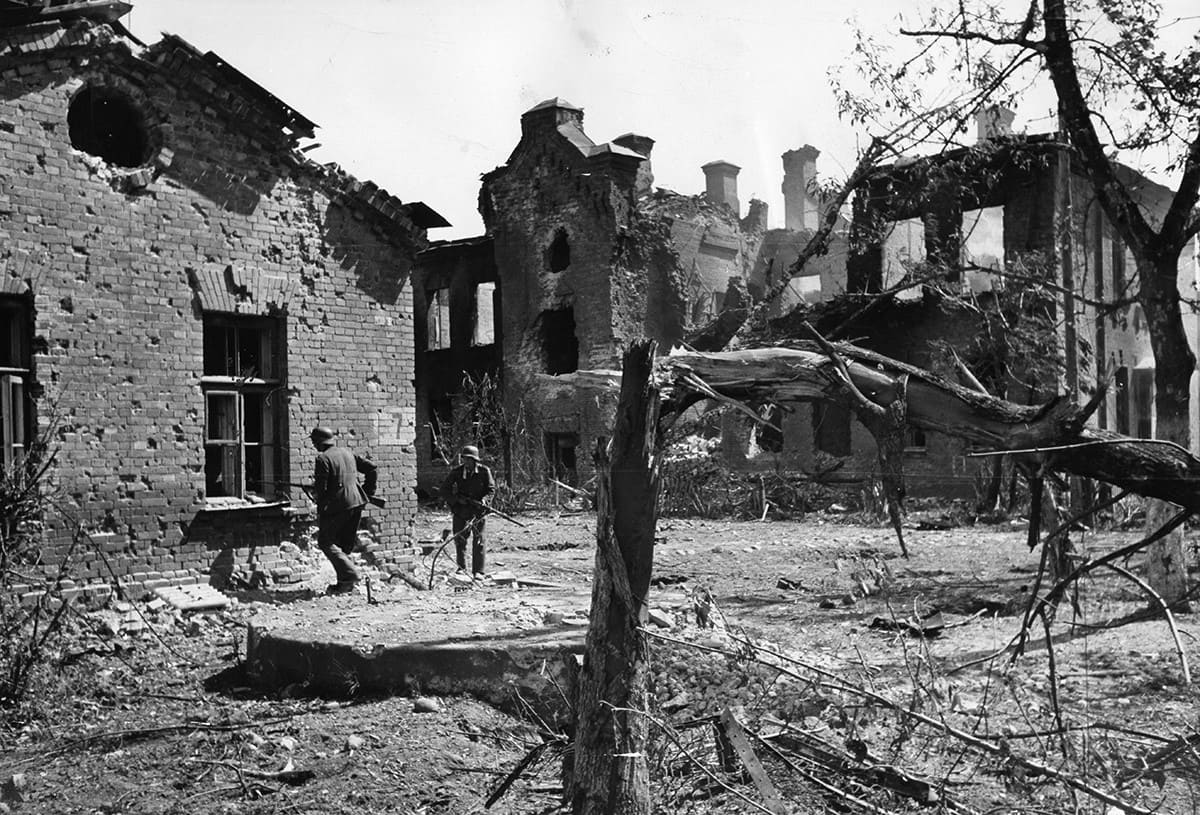Your basket is currently empty!
In the annals of World War II, few places embody the spirit of heroic resistance quite like the Brest Fortress. Located in present-day Belarus, this historic stronghold became an enduring symbol of Soviet defiance against the Nazi invasion, earning its place as a truly heroic site of World War II. Its story is a testament to the extraordinary courage of ordinary soldiers facing impossible odds, forever etching the Brest Fortress into the fabric of wartime memory.
The Unexpected Onslaught: Operation Barbarossa

On June 22, 1941, the German Wehrmacht launched Operation Barbarossa, a massive surprise attack on the Soviet Union, marking a pivotal moment in the war. The Brest Fortress, strategically positioned at the confluence of the Mukhavets and Bug rivers, near the newly established Soviet-German border, was one of the very first targets. German military planners, confident in their blitzkrieg tactics, expected to swiftly overcome the garrison within hours, securing a vital crossing point over the Bug River and paving the way for their rapid advance eastward.
However, they severely underestimated the resolve and fighting spirit of the Soviet soldiers stationed there. Despite being caught utterly off guard, with many still in their barracks, and vastly outnumbered – a garrison of approximately 8,000 Soviet soldiers faced a German force of over 17,000, supported by tanks, artillery, and airpower – the defenders of Brest Fortress refused to surrender. What was anticipated to be a brief skirmish quickly escalated into a prolonged and desperate struggle.
Unwavering Courage Amidst Siege and Destruction
The battle for Brest Fortress was nothing short of brutal and relentless. Cut off from reinforcements almost immediately, without adequate supplies of food, clean water, or ammunition, and facing overwhelming artillery bombardments from heavy guns, relentless air raids, and constant infantry assaults, the Soviet soldiers fought with unimaginable bravery. They organized spontaneous pockets of resistance, utilizing the fortress’s complex network of barracks, casemates, and tunnels to their advantage.
The Germans, frustrated by the unexpected resistance, resorted to increasingly destructive tactics, including using flamethrowers to clear out strongpoints and even attempting to pump gas into the casemates. Yet, small groups of defenders, often isolated from one another, held out for weeks, far beyond what the German high command had anticipated. Their stubborn defense confounded the German advance, forcing them to divert significant resources that were critically needed elsewhere for the rapid push deeper into Soviet territory.
Some of the most poignant testaments to their defiance are the haunting inscriptions found on the fortress walls. One famous message, scrawled in the darkness, reads: “I am dying, but I will not surrender! Farewell, Motherland. 20.VII.41.” This simple yet powerful statement encapsulates the unbreakable spirit of the defenders, who fought to the last breath, often engaging in hand-to-hand combat when ammunition ran out. Major Pyotr Gavrilov, one of the last known organized defenders, was captured as late as July 23, 1941, over a month after the initial attack, severely wounded but still defiant, highlighting the prolonged and desperate struggle.
A Legacy of Resilience and Heroism

While the Brest Fortress ultimately fell, the unexpected and fierce resistance here severely disrupted the German timetable and plans for a swift victory. The prolonged battle forced the Wehrmacht to commit significant resources and valuable time, delaying their advance and contributing to their eventual failure to capture Moscow before the brutal Russian winter set in – a critical turning point in the Eastern Front.
Today, the Brest Hero-Fortress Memorial Complex stands as a powerful and deeply moving tribute to the courage and immense sacrifice of its defenders. Millions visit this solemn site annually to pay their respects and reflect on the immense human cost of war. The towering main monument, “Courage,” depicting a determined soldier, the poignant “Thirst” sculpture symbolizing the desperate need for water, and the preserved ruins of the fortress all serve as a stark and visceral reminder of the ferocity of the battle and the unwavering spirit of those who fought against overwhelming odds.
The Brest Fortress is far more than just a historical site; it’s a profound and enduring symbol of resilience, patriotism, and the heroic sacrifice made during World War II. Its story continues to inspire generations, serving as a powerful testament to the indomitable human will in the face of tyranny and a stark warning about the horrors of war.

